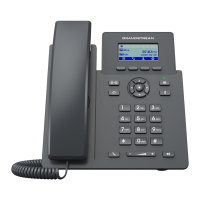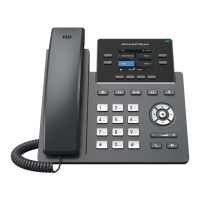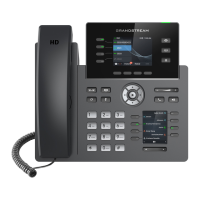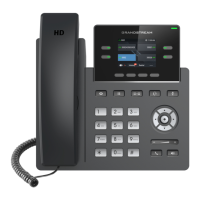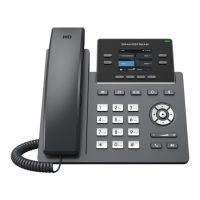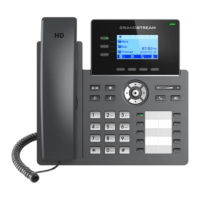the session timer only when the remote party supports this feature. To turn off the
session timer, select “No”. The default setting is "No".
UAC Specify Refresher
As a Caller, select UAC to use the phone as the refresher; or select UAS to use the
Callee or proxy server as the refresher. The default setting is "UAC".
UAS Specify Refresher
As a Callee, select UAC to use caller or proxy server as the refresher; or select UAS to
use the phone as the refresher. The default setting is "UAC".
Force INVITE
The Session Timer can be refreshed using the INVITE method or the UPDATE method.
Select “Yes” to use the INVITE method to refresh the session timer. The default setting
is "No".
Account x 🡪 Codec Settings
Audio
Preferred Vocoder
(Choice 1 – 8)
Multiple vocoder types are supported on the phone, the vocoders in the list is a higher
preference. Users can configure vocoders in a preference list that is included with the
same preference order in SDP message.
Codec Negotiation Priority
Configures the phone to use which codec sequence to negotiate as the callee. When set
to “Caller”, the phone negotiates by SDP codec sequence from received SIP Invite.
When set to “Callee”, the phone negotiates by audio codec sequence on the phone.
The default setting is “Callee”.
Use First Matching Vocoder in 200OK
SDP
When it is set to “Yes”, the device will use the first matching vocoder in the received
200OK SDP as the codec.
The default setting is “No”.
Hide Vocoder
When option Hide Vocoder is set as Yes, the coded will be hidden from call screen as
bellow
The default setting is “No”.
Configures to enable or disable
multiple m lines in SDP
If enabled, the phone always responds one m line in SDP regardless multiple m lines
are offered.
iLBC Frame Size
This option determines the iLBC packet frame size. Users can choose from 20ms and
30ms.
The default setting is “30ms”.
iLBC Payload Type
This option is used to specify iLBC payload type. Valid range is 96 to 127.
The default setting is “97”.
G.726-32 Packing Mode
Selects “ITU” or “IETF” for G726-32 packing mode.
The default setting is “ITU”.
OPUS Payload Type
Specifies OPUS payload type. Valid range is 96 to 127. Cannot be the same as iLBC or
DTMF Payload Type.
Default value is 123.
Send DTMF This parameter specifies the mechanism to transmit DTMF digits. There are 3 supported
modes:
● In audio: DTMF is combined in the audio signal (not very reliable with low-bit-rate
codecs).
● RFC2833 sends DTMF with RTP packet. Users can check the RTP packet to see the
DTMFs sent as well as the number pressed.
● SIP INFO uses SIP INFO to carry DTMF.
